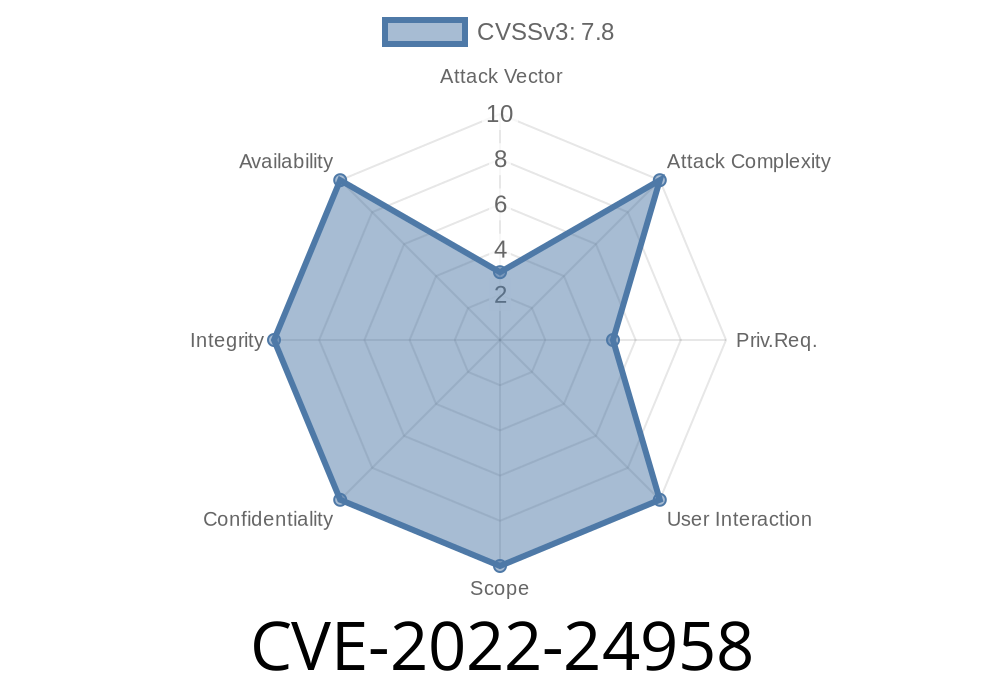In this long-read post, we will delve into the recently discovered vulnerability (CVE-2022-24958) in the Linux kernel, specifically in the USB gadget subsystem. This vulnerability affects the Linux kernel's versions up to 5.16.8 and can lead to improper resource handling, which could leave the system exposed to further attacks. We will dissect the vulnerable code and provide insight into the exploit details. As always, we will provide links to original references and resources throughout our discussion.
Vulnerable Code Snippet: drivers/usb/gadget/legacy/inode.c
The Linux kernel's USB gadget subsystem handles the creation and management of USB devices. The vulnerability, dubbed CVE-2022-24958, resides in the inode.c file, which deals with the allocation and release of various device resources, including the dev->buf variable.
First, let's take a look at the code snippet in question
static ssize_t ep_write(struct file *fd, const char __user *buf,
size_t count, loff_t *ptr)
{
...
if (buf == NULL || count == )
return -EINVAL;
down (&dev->sem);
spin_lock_irq(&dev->lock);
if (!dev->buf) {
spin_unlock_irq(&dev->lock);
up (&dev->sem);
return -EFAULT;
}
...
}
static int ep_release(struct inode *inode, struct file *fd)
{
...
if (buf) {
status = usb_ep_disable(ep);
kfree(buf);
dev->buf = NULL;
}
}
Above, we can see two functions, ep_write() and ep_release(). The ep_write() function is responsible for handling incoming USB data. It starts by checking the input buffer (buf) for validity and obtaining necessary locks by calling down(&dev->sem) and spin_lock_irq(&dev->lock). Next, it checks whether the dev->buf pointer is NULL, which indicates a free buffer.
The issue occurs in the ep_release() function as it improperly handles the release of dev->buf. It checks if buf is not NULL and then frees the buffer's memory using kfree(buf). However, the function does not actually check or set the dev->buf to NULL, which is necessary to indicate a free buffer.
Exploit Details
The primary impact of this vulnerability is that it can lead to use-after-free (UAF) conditions. An attacker can exploit this vulnerability to overwrite or manipulate the memory associated with the freed buffer, possibly leading to arbitrary code execution or elevation of privileges.
Due to the nature of kernel memory management, this issue could also potentially result in memory leaks or corruption, which may have broader consequences, depending on the surrounding code execution flow and attacker skill.
Links to Original References
For a deeper understanding of the issue and its implications, reference the following resources directly:
- The Linux kernel source code: https://git.kernel.org/pub/scm/linux/kernel/git/stable/linux.git/tree/drivers/usb/gadget/legacy/inode.c?id=refs/tags/v5.16.8
- Detailed bug report with analysis: https://bugzilla.kernel.org/show_bug.cgi?id=CVE-2022-24958
Conclusion
The CVE-2022-24958 vulnerability has significant potential consequences and users running affected systems should apply patch whenever available. By properly releasing the dev->buf variable and implementing necessary checks and validations, the Linux kernel considerably reduces the risk of memory manipulation, memory leaks, and kernel resource abuse. If you are responsible for maintaining a Linux-based system, it's essential to follow relevant security bulletins and forums, and always keep the system updated with the latest security patches.
Timeline
Published on: 02/11/2022 06:15:00 UTC
Last modified on: 07/01/2022 14:15:00 UTC
